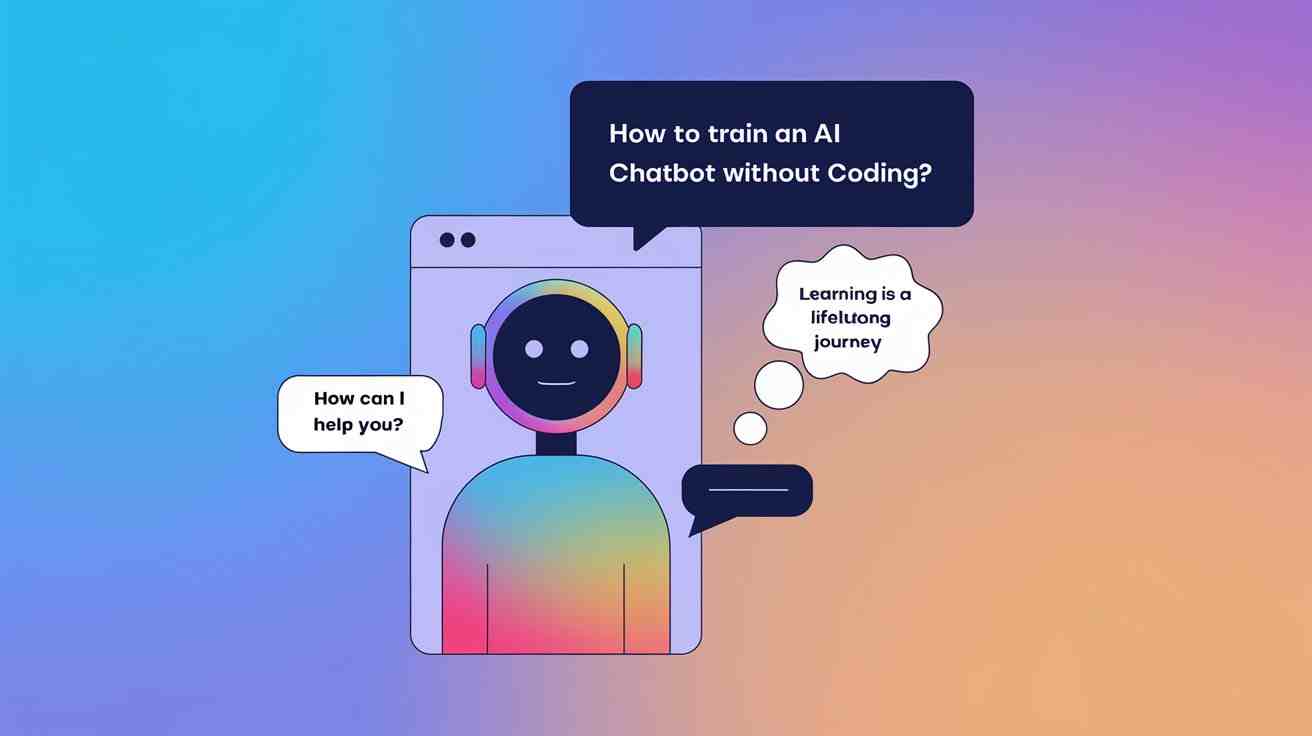Train AI chatbot no coding
AI chatbots are revolutionizing customer service and automating repetitive tasks across industries. The best part? You don’t need to be a coding expert to build one! Thanks to user-friendly, no-code platforms, anyone can design and deploy AI chatbots to enhance customer engagement, streamline operations, and boost business efficiency. Train AI chatbot no coding.
What is an AI Chatbot?
An AI chatbot is an automated system that interacts with users through text or voice. It uses natural language processing (NLP) and machine learning to understand user queries and provide appropriate responses. From answering customer questions to assisting with online purchases, AI chatbots are transforming how businesses interact with customers.
Why Train a Chatbot Without Coding?
Training a chatbot without coding has many advantages:
- Cost-Effective: Save money by avoiding expensive developers.
- Time-Saving: Build and deploy a chatbot in hours instead of weeks.
- Ease of Use: No technical knowledge required, just a few clicks to design the flow.
No-code platforms are perfect for small businesses, startups, and individuals who want to leverage AI without getting into technical details.
Best No-Code Platforms for AI Chatbot Training
Here are some of the most popular no-code platforms that allow you to build a chatbot quickly:
- TARS: A drag-and-drop interface to design conversational flows. Great for lead generation and customer service.
- Chatfuel: Ideal for building bots on Facebook Messenger. Offers easy integration with other platforms.
- Dialogflow: Google’s NLP-powered chatbot tool that also offers a visual interface for non-coders.
- Landbot: Build interactive chatbots for websites using its intuitive drag-and-drop builder.
These platforms make it easy to create functional chatbots that can handle customer queries, automate tasks, and provide personalized experiences.
Step-by-Step Guide: Train AI chatbot no coding
Follow these simple steps to create your AI chatbot:
- Define Your Chatbot’s Purpose
Understand the main goal of your chatbot. Is it for customer support? Lead generation? Make sure you know what tasks the bot will handle. - Choose a No-Code Platform
Pick the platform that best suits your needs. For example, Chatfuel works well for social media bots, while TARS is better for conversational marketing. - Design the Conversation Flow
Map out the user journey. What questions will users ask? How should the chatbot respond? Use the platform’s visual interface to create a flowchart of the conversation. - Integrate NLP Features
Utilize the platform’s built-in NLP capabilities to allow your chatbot to understand user input better and offer personalized responses. - Test Your Chatbot
Run tests with real users to see how well your chatbot performs. Fine-tune the responses based on feedback and interaction results. - Deploy and Monitor Performance
Once you’re happy with the chatbot’s performance, launch it on your website or messaging platform. Use analytics tools to monitor its effectiveness and make adjustments over time.
Train AI chatbot no coding: Limitations
While no-code tools are great for beginners, there are a few limitations:
- Limited Customization: Complex bots may require advanced features that no-code platforms can’t provide.
- Scalability Issues: Large businesses with high traffic may face challenges in scaling no-code chatbots.
- Dependence on Platform: Changes in platform pricing or functionality can affect your chatbot’s performance.
Train AI chatbot no coding: Best Practices
- Keep Conversations Simple: Avoid complex dialogue. The more straightforward, the better the user experience.
- Continuous Testing: Chatbots improve with regular testing. Track user interactions and update accordingly.
- Use Analytics: Most platforms provide analytics to help you understand how users interact with your chatbot. Use these insights to improve its performance.
Conclusion
Creating an AI chatbot without coding is now within reach for anyone. By using no-code platforms, you can automate customer service, increase engagement, and improve operational efficiency with minimal effort. Just follow the right steps, choose the right platform, and start building!

